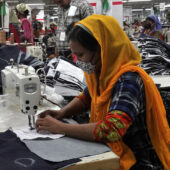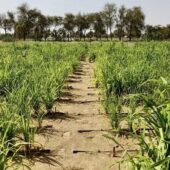The new facility will support clean energy integration across South Africa, create 20,000 jobs and boost the local economy in the country’s Eastern Cape province.

The SA-H2 fund, which is managed by a partnership between climate finance investor Climate Fund Managers (CFM) and development financing institution Invest International, both from the Netherlands, will invest up to $20m (€17.2m) in the development of South Africa’s first large-scale green ammonia production facility.
The fund, a blended finance facility focused on speeding up South Africa’s energy transition and green hydrogen economy, also has an option to take part in the building phase of the Hive Hydrogen Coega green ammonia project for up to $200m. Once operational, the plant is expected to produce 1 million tonnes of green ammonia per year, making it the largest of its kind in South Africa.
“The Hive Coega green ammonia project is an ideal fit: it is ambitious, scalable, and export-oriented, with the potential to catalyse further investment and unlock long-term socio-economic benefits for South Africa,” Sebastiaan Surie, head of new ventures at CFM, told Impact Investor.
Surie went on to say the deal was a good example of how CFM de-risks high-impact projects at an early stage to pave the way for commercial capital to follow. Additional projects in the pipeline will now also benefit from these funds, he added.
Founded in 2023, the SA-H2 fund is supported by Invest International, CFM, Sanlam, the Development Bank of Southern Africa and the Industrial Development Corporation of South Africa, in collaboration with other strategic partners. At the time, Invest International said it aimed to secure $1bn in funding, to be raised directly in South Africa or indirectly via other channels.
Zero-carbon
Located in the Coega Special Economic Zone in Nelson Mandela Bay, Eastern Cape province, the plant is being developed by Hive Hydrogen South Africa, a joint venture between UK-based Hive Energy and South African renewable energy and investment company BuiltAfrica.
Hive Hydrogen is forecast to avoid 2.6 million tonnes of CO₂ equivalent gases annually because its zero-carbon green ammonia serves as a sustainable alternative to fossil fuel-based grey ammonia used in hard-to-abate industries such as fertiliser production, shipping and power generation. Green ammonia is produced by combining green hydrogen, which is generated via electrolysis powered by renewable energy, with nitrogen taken from the air.
Hive Hydrogen is targeting growing export demand for green ammonia from Asia and the EU, according to CFM and Invest International. Japanese conglomerate ITOCHU Corporation may come on board as a strategic equity investor in the project after signing a memorandum of cooperation with Hive Hydrogen, both parties said.
“South Africa has the infrastructure, resources, engineering and industrial capabilities to become a global leader in green ammonia production. The Hive Coega green ammonia project will not only accelerate the just energy transition but also revitalise the Eastern Cape economy through job creation, infrastructure investment and skills development,” said Thulani Gcabashe, executive chairman of Hive Hydrogen South Africa.
New jobs
The new facility will enable up to 20 gigawatts of additional renewable energy plants to connect to the national grid, which supports broader clean energy integration across South Africa. It will also create 20,000 jobs in construction and operation in the Nelson Mandela Bay region, which has the lowest gross domestic product per capita in the country.
SA-H2’s blended finance structure was specifically set up to take the risk out of complex infrastructure structure projects, and unlock private sector investment in sectors that are crucial for South Africa’s move to net zero.
“By deploying public capital to absorb early-stage risk, our blended finance model enables private capital to invest in the construction of this pioneering green ammonia plant on terms aligned with their mandates, accelerating the global energy transition,” CFM’s Surie said.










